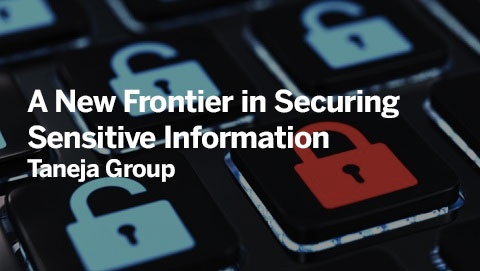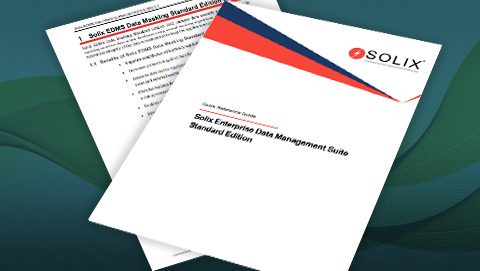Referential Masking
What is Referential Masking?
Referential Masking, or referential integrity preservation, is a data masking technique used to mask sensitive data while maintaining the relationships and referential integrity between different tables in a database. It is essential when dealing with relational databases where data is distributed across multiple tables, and maintaining data consistency and relationships is crucial for the proper functioning of the database.
Imagine a database with two tables – Customers and Orders. Each customer (in the customer’s table) has a unique ID, and each order (in the orders table) has a customer ID referencing a specific customer in the customer’s table. This link ensures data consistency so one can quickly know which order belongs to which customer.
If one needs to mask customer IDs using traditional methods like data nulling or character substitution, the links between the tables will be broken. Referential Masking goes beyond traditional methods, ensuring the anonymity of sensitive information while maintaining the integrity of relationships between data elements.
Benefits of Referential Masking
In essence, post-masking Referential Masking ensures that the relationships between various data elements are retained. Below is a detailed view of the benefits this masking technique could deliver.
- Relational Consistency: Referential Masking involves the strategic obfuscation of sensitive data points, ensuring that the relationships and dependencies between different tables within a database are consistently preserved.
- Contextual Understanding: Referential Masking considers the contextual understanding of data relationships. It doesn’t treat each data point in isolation; instead, it comprehends the interdependencies, allowing for a nuanced approach to obfuscation.
- Preserving Data Usability: It ensures that the masked data remains usable for different purposes, such as development, testing, and analytics. This delicate balance is achieved by preserving the referential structure without compromising sensitive information.
Limitations
While Referential Masking is a powerful technique for securing sensitive data in different environments, it is essential to recognize its limitations to make informed decisions about its implementation. Here are key considerations:
- Complex Database Relationships: It may face challenges when dealing with highly complex database relationships. Intricate dependencies between tables can pose challenges in maintaining referential integrity, risking compromises in data security.
- Impact on Query Performance: As the process preserves the relationship, it can introduce certain performance overheads. Complex masking rules and dynamic adjustments may impact query execution times, necessitating a balance between security and performance.
- Challenges with Historical Data: Dealing with historical data or time-sensitive relationships might be difficult. The dynamic nature of relationships over time may pose challenges in ensuring consistent masking while accurately reflecting changes.
- Limited Applicability to Unstructured Data: It is primarily designed for relational databases. Its effectiveness may be limited when dealing with unstructured data or scenarios where the relationships are not clearly defined in a tabular structure.
- Dependency on Accurate Metadata: Referential Masking success hinges on precise metadata and deep database structure comprehension. Incomplete or inaccurate metadata can compromise masking, risking referential integrity preservation.
- Resource Intensive: Its implementation can be resource-intensive, especially in large databases. Applying dynamic masking rules and preserving relationships may require substantial computing resources, impacting overall system performance.
- Balancing Security and Usability: Data security and usability are tricky for non-production use cases. Excessive masking may hinder testing, while insufficient masking risks security. Achieving the right balance is crucial for effective data management.
Use Cases of Referential Masking
It is pivotal in securing sensitive information within non-production environments and other fields, offering versatile applications across various scenarios. Understanding its use cases is crucial for organizations aiming to fortify data privacy while maintaining the functionality of their databases.
- Testing and Quality Assurance: It preserves data integrity in testing, facilitating realistic datasets for quality assurance. It safeguards sensitive data, enabling authentic scenarios without compromising privacy, essential for thorough testing in various environments.
- Collaborative Development: It ensures secure, collaborative development environments for multiple teams accessing specific data subsets. Developers could work without sensitive data access, fostering collaboration while upholding data privacy standards.
- Analytics and Reporting: It enables data scientists and analysts to use realistic datasets while protecting sensitive information. This is crucial for extracting meaningful insights without compromising data privacy in analytical processes.
- Regulatory Compliance: Referential masking aids compliance with GDPR, PCI DSS, HIPAA, LGPD, and PIPL in non-production settings. Organizations can promote compliance audits in complex regulatory environments by maintaining relationships in the masked data.
- Mergers and Acquisitions: It safeguards sensitive data during mergers and acquisitions, ensuring confidentiality in collaborative projects. It maintains data relationships and privacy, fostering a secure environment for collaboration among organizations sharing databases.
In conclusion, Referential Masking is a pivotal solution in modern data security and privacy. By adeptly preserving data relationships while obscuring sensitive information, it enables secure collaboration, regulatory compliance, and data integrity. Its versatility across various data structures and minimal performance impact underscore its indispensable role in safeguarding confidential data in today’s interconnected digital environments.
FAQs
Can Referential Masking be reversed once applied?
Yes, Referential Masking implementations are reversible, allowing organizations to revert to the original data if needed. This flexibility ensures that masked data can be restored without compromising data integrity.
How does Referential Masking handle data dependencies across multiple tables?
Referential masking preserves data dependencies by consistently masking sensitive information across all related tables. This ensures that data relationships are maintained, maintaining the integrity of the dataset.





